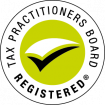Melbourne Investment Property Accountant
So what is negative gearing, and how can it benefit you?
You need to consider things like rental yields, capital growth, property management and tax
When it comes to your tax affairs you need to think beyond just completing your annual tax return.
We have written about a few tax topics that we think a property investor (or would be investor) needs to know about.
Click here to download a free fact sheet for property investors or choose a topic from the table below.
Our services include:
- Tax returns for individuals
- Property investment through super
- Tax projections for your next property purchase
- General advice and education
- Advice on capital gains tax and CGT property exemptions
Property investment: negative gearing
So what is negative gearing, and how can it benefit you?
Even if you’ve never been a property investor you have probably heard the term negative gearing
Gearing is where you borrow to invest in an income producing asset, in this case, property. Most property investors will borrow to buy a property. Negative gearingis where the cost of borrowing exceeds the income from the property.
When your rental expenses exceed your rental income this creates a net rental loss. This loss reduces your taxable income, and a lower taxable income means a lower tax liability.
The tax benefit that the loss creates is only a percentage of the net rental loss. The percentage depends on the marginal tax rate of the investor (see table below).
A taxpayer earning $30,000 has a marginal tax rate of 16.5%, so a net rental loss of $1,000 provides a tax benefit of $165. For a taxpayer with income over $180,000 the benefit would be $465. So negative gearing is more advantageous for higher income earners.
It is important to remember that even though a tax loss increases your refund a loss is still a loss – your investment is costing you money. This means a negatively geared rental property is only a profitable investment if the capital growth is more than the sum of the losses incurred over the period of ownership.
It is critical to be able to evaluate whether your property is profitable. See our separate post on this topic.
Marginal tax rates 2010-11
| Taxable income | Marginal tax rate |
|---|---|
| 0 – $6,000 | Nil |
| $6,001 – $37,000 | 16.5% |
| $37,001 – $80,000 | 31.5% |
| $80,001 – $180,000 | 38.5% |
| $180,001 and over | 46.5% |
Source: ato.gov.au
Property Investment: Choosing A Tax Structure
Property investors have several choices of ownership structures
Sole owner, co-owners, trust or super fund? Here are the pros and cons of some of the common scenarios.
| Structure | How does it work? | When is this structure used? |
|---|---|---|
| Sole Owner | The owner declares all rental income, deductions and capital gains. | Works well where one partner in a couple has a higher tax bracket and wants to take advantage of negative gearing. |
| Join Tenants | Joint ownership in equal proportions. Upon death the surviving partners take ownership of the property. | Only suitable for related couples due to the estate planning implications. Should not be used by business partners. |
| Tenants in Common | Ownership split in any proportion agreed by the partners. Each partner can include their share in | Works for unrelated joint investors (e.g. business partners) and for related couples who want to split in an uneven proportion (e.g. 80/20 or 60/40). |
| Unit Trust | A trust owns the property and the investor owns units in the trust. | This structure is used where an investor wants to combine asset protection with the negative gearing. |
| Self Managed Super Fund (SMSF) | Property is purchased using your current super plus borrowing if required. Borrowing must be limited recourse. | A SMSF works best where the investor’s objective is to save for retirement. Also used where a small business wants to buy their business premises. See our article Use super to build your business. |
| Company | A company pays tax at a flat rate of 30%. The investors would be directors and shareholders in the company. | A company does not allow negative gearing and there is no 50% discount on capital gains. This makes it a poor structure for owning real estate |
Property investment: the right loan makes a difference
The right loan is about more than just interest rate and feature
The astute investor also needs to consider the tax and cash flow implications of their loan product.
Interest paid on a loan is tax deductible, but the principal repayments are not. Many investors opt for interest only loans because:
- the loan repayments are smaller; and
- the loan repayments are fully deductible.
The comparison is more clear when you compare the after tax cash flow (see below). The difference of $7,000 can be the difference between being able to afford a property or not.
| Interest Only | Principal & Interest | |
|---|---|---|
| Loan amount | $250,000 | $250,000 |
| Interest rate | 7% | 7% |
| Monthly repayments | Nil | $24,595 |
* first year of loan ** assume 31.5% rate
If an investor has a home loan in addition to their investment loan they should pay off the home loan first. This is because the investment loan is tax deductible and a percentage of the interest paid is refunded on your tax return. For example, if your marginal tax rate is 30% then a tax deductible loan is effectively 30% cheaper than a non deductible loan.
To maximise the tax advantage an investor should:
- pay the home loan as principal & interest
- pay the investment loan as interest only
Investors should avoid using their investment loan for any non-investment purposes. It sounds simple, but failure to do this can create a tax mess.
The reason is that the tax deductibility of loan interest depends on the use of the loan. If only 90% of the loan funds are used for your investment, then you can only claim a deduction for 90% of the interest.
For example, an investor has an investment loan of $225,000 and redraws $25,000 to buy a new car. The loan is now only 90% deductible ($225,000/ $250,000) and the interest calculation can become very complicated.
You can re-draw the loan for property related expenses without affecting the deductibility of the loan, e.g. to pay for property related expenses, repairs or improvements.
Property investment: early tax refunds
Get your tax refund early and boost your cash flow
Using a negative gearing strategy will increase the size of your tax refund
But you don’t have to wait until July to get ask for your money back. You can get the tax benefit early by reducing the tax that comes out of your pay cheque.
Your employer is not allowed to reduce the rate of tax on your pay without permission from the ATO. You can only reduce your withholding tax by completing a PAYG Withholding Variation.
The form can be completed and submitted online. In a matter of days the ATO will inform your employer’s payroll department of the new, reduced rate of tax to take out of your pay.
Having the immediate additional cash flow can lessen the burden of your rental expenses such as loan repayments. Cash flow is critical, especially for highly geared investors.
Kate is a property investor who has borrowed 95% of the value of her investment property. She is negatively geared and expects a refund of $11,000 based on her interest expenses, depreciation and other deductions.
If Kate lodges a PAYG withholding variation, the ATO can authorise Kate’s employer to deduct approximately $400 less tax from each fortnightly pay. The additional $400 in take home pay allows Kate to more comfortably service her loan.
The PAYG withholding form can be complex, especially when lodging your first application. You need to complete the details of all your properties on your first year’s application. In subsequent years you only need to add any new properties you buy, so the process is not as involved.
If you think that improved cash flow would benefit you, and would like assistance lodging a PAYG Withholding Variation please contact our office for an appointment.
If you would like more information on the form go to ato.gov.au and search “00096541”.
Property investment: tips for managing capital gains
A capital gain is the difference between the capital proceeds (sale price) and the cost base (purchase price plus capital costs)
Basically, the higher your cost base, the lower your capital gain
So make sure you include all the elements of the cost base, including:
- Purchase costs such as stamp duty, legal fees, conveyancing, and building inspections;
- Sale costs such the agent’s fees, advertising and legal fees relating to the sale or title transfer;
- Capital works such as building works, renovations and extensions. (This excludes depreciating assets as different rules apply to these.)
If you don’t have the paperwork to prove you incurred a capital expense you cannot include it in your CGT calculation. Missing paperwork can mean a bigger capital gain and extra tax. So keeping good records is critical.
This can be a problem with an investment property that is held for several years, or even decades. However, if your tax agent creates a CGT Asset Register for your property you don’t need to worry about keeping paperwork.
In addition, having a clear record of your cost base allows better tax planning when you sell the property.
The date of sale for the purposes of CGT is the contract date not the settlement date. If a property is sold in June 2011 and settled in August it is taxed in the 2010-11 tax year.
If you have a large capital gain to include in your next tax return here are some steps to improve your position:
- Salary sacrifice into superannuation (employees)
- Make a lump sum deductible super contribution (self-employed)
- Pre-pay expenses e.g. interest on an investment loan, insurance premiums
- Dispose of other CGT assets (e.g. shares) that are in a loss position.
- Lodge your return later in the lodgement cycle (i.e. 15 May) to keep hold of the money for longer. This is particularly important if your cash flow is tight.
Property investment: take advantage of depreciation
Depreciation can make a big difference to the cash flow of your investment property
It is simply a recognition of the decline in value of an asset over time
In the real world things get older, they becomes worn out, and their value decreases. Depreciation is how that process is recorded in financial accounts.
The ATO allows you to claim for the depreciation (which they call decline in value) of the assets used in earning income. This includes the assets in your investment property.
When you purchase real estate you are actually buying three things:
- Land
- Buildings
- Assets in the buildings
Depreciation can be claimed on the assets of your property over the course of their “effective life”, as set by the ATO. For example, the ATO suggests a ceiling fan has a life of 5 years, and carpet 10 years. Even the buildings themselves can be deducted over time. Buildings and fixtures attached to the building can be deducted at the rate of 2.5% per year.
Depreciation deductions are great because they allow a deduction without an expense. Specifically:
- You can claim deductions for assets and buildings even if you didn’t pay for them. When a property is sold the new owner inherits the unclaimed depreciation of the old owner.
- Depreciation is cash flow positive. Normally, to claim a deduction you first have to incur an expense. With depreciation, you get the tax deduction without having to incur any cash outflow. Unlike other expenses, depreciation puts money back in your pocket.
A quantity surveyor can produce a depreciation report for a property. The report details all your assets, fixtures and buildings, and determines the deduction you can claim each year over a period of 40 years. A depreciation report could save you thousands in tax, especially if you have purchase a newly built property.
The cost of a good quality depreciation report is around $700, and is tax deductible for rental property owners. Not every property has enough depreciation deductions to justify the cost of the report. If you are unsure, simply call the quantity surveyor and ask them if the report will benefit you. Generally a report is worthwhile if your property was built within the last 10-15 years, or has had recent significant renovations (whether by you or the previous owner). Your depreciation deductions can save you thousands in tax.
You may want to know who we think are the best depreciation report providers? The best one I’ve dealt with are BMT Quantity Surveyors. They are professional and their reports are thorough and easy to read. They will tell you whether a report is needed or not for your investment property. And they send a copy of the report to your accountant via email to keep everybody in the loop. (Note: they don’t give a referral kickback to accountants, and have not paid for this endorsement!)
Depreciation can be claimed without a professional depreciation report. If you were an owner-builder or the building was renovated while you owner the property then you probably have details of all the costs and outgoings. This will enable you to work out your own depreciation.
All you need is the date you bought the asset, the amount paid, and the effective life of the asset. The ATO has a comprehensive list of rental property assets with the corresponding effective life. They publish these in their annual guide for rental property owners. At the time of writing the latest version was 2010-11.
You should note that you distinguish between capital allowances (e.g. free-standing assets) and capital works (like buildings and assets that form part of the building, e.g. tiles). These are included in two separate parts of the tax return.
Amendments can be made to a prior year tax return to include any change or adjustment. Depreciation is no exception. You can amend your tax return up to two years after your return was assessed. The exact deadline for amendments depends on when you lodged the original return. The amendment period is four years for some taxpayers. Your depreciation report will be backdated to include years you’ve previously missed.
Making the right tax decisions will enhance the overall return you get from your property. Beyond Accountancy have staff who are experienced in helping property investors optimise their tax position. By helping you understand how you can make the most of the advantages in the tax system we help you minimise tax, maximise your investment yield and optimise your cashflow.




